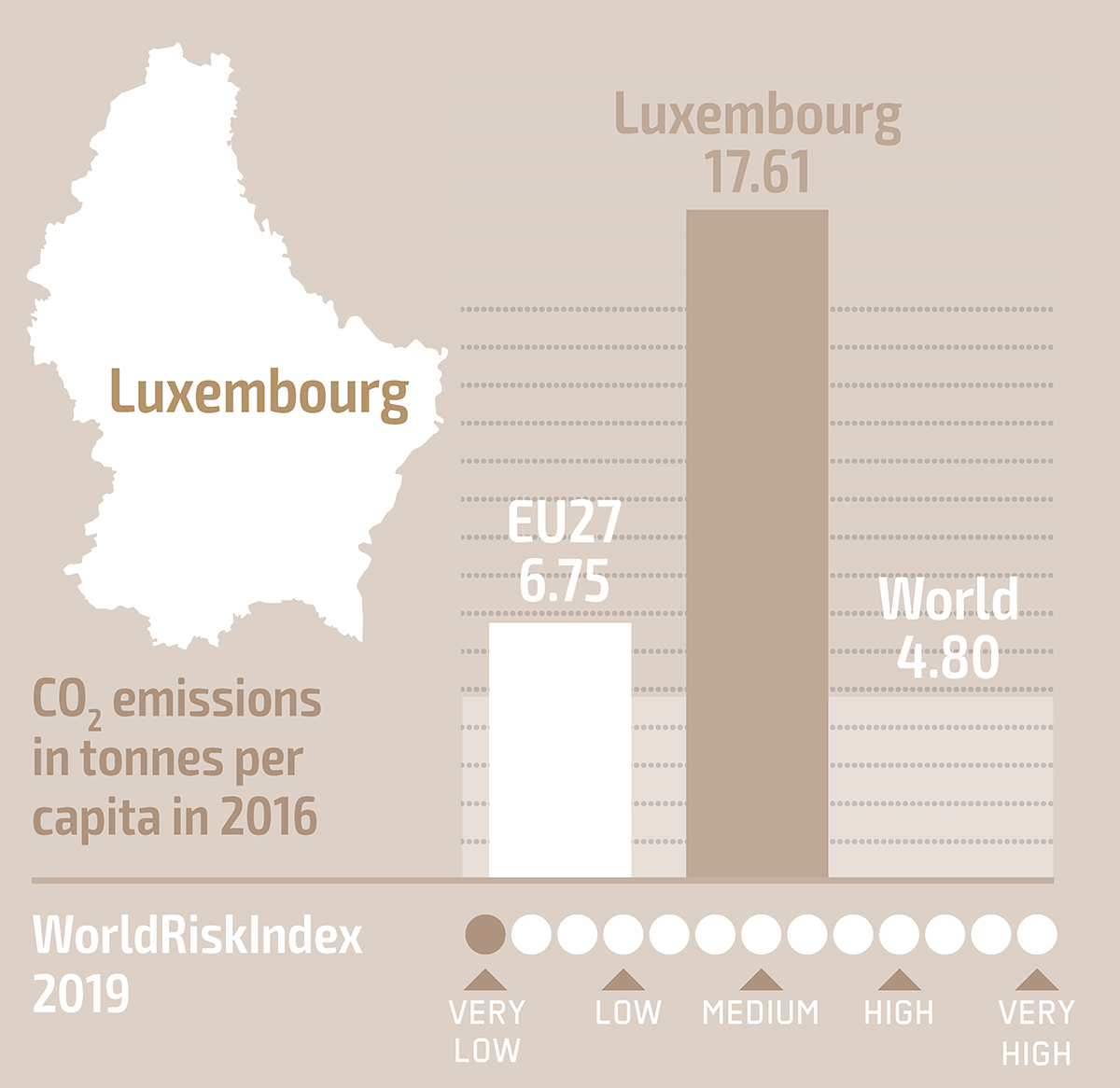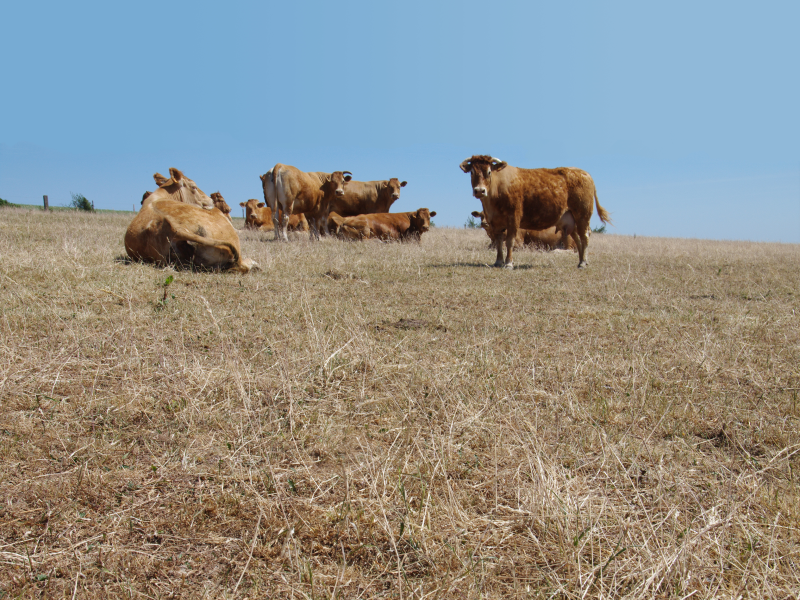Summer droughts
Jeff Rohen A livestock farmer from Insenborn in Islek, Luxembourg’s wettest and coldest region.
© Dietmar Mirkes, ASTM / CA Luxembourg

“The soil here is very thin and rocky, with slate below. It doesn’t retain any water, hence we need regular rain, otherwise it dries out very quickly. The early summer of 2011 was extremely dry, which meant that we had to buy hay for our cattle. In the winter and spring, it rained more than usual though. And then last spring, a heavy storm washed away our neighbour’s potato fields that lay on a slope. In the 1980s, storms tore off the barn’s roof twice; things have been quieter in recent years. I have the impression that the weather is milder in the autumn. The weather patterns seem to change faster and to be more irregular, and the temperatures vary more than before, too.“
SCIENTIFIC BACKGROUND
In Luxembourg, the long-term average temperature rose from 8.3°C over the three decades between 1961 and 1990 to 9.2°C between 1981 and 2010 – so by 0.9°C over a 20-year period (measured at Luxembourg Airport). Temperatures rose during winter in particular. Vegetation growth periods are now approximately two weeks longer. As a result of more frequent westerly winds during the winter, winter precipitation has increased since the 1980s, while the summers have become drier. Since the 1990s, this has above all led to higher river water levels and increased flooding during the winter. In the summer months, lower water levels and more frequent droughts have led to more water shortages. The risk of soil erosion continues to grow.
OTHER IMPLICATIONS OF CLIMATE CHANGE
Over the past 50 years, storms have become more common and violent (storm Kyrill wreaked extensive damage in January 2007). Warming causes plants to flower, birds to breed and animals and plants to migrate from the Mediterranean area earlier.

